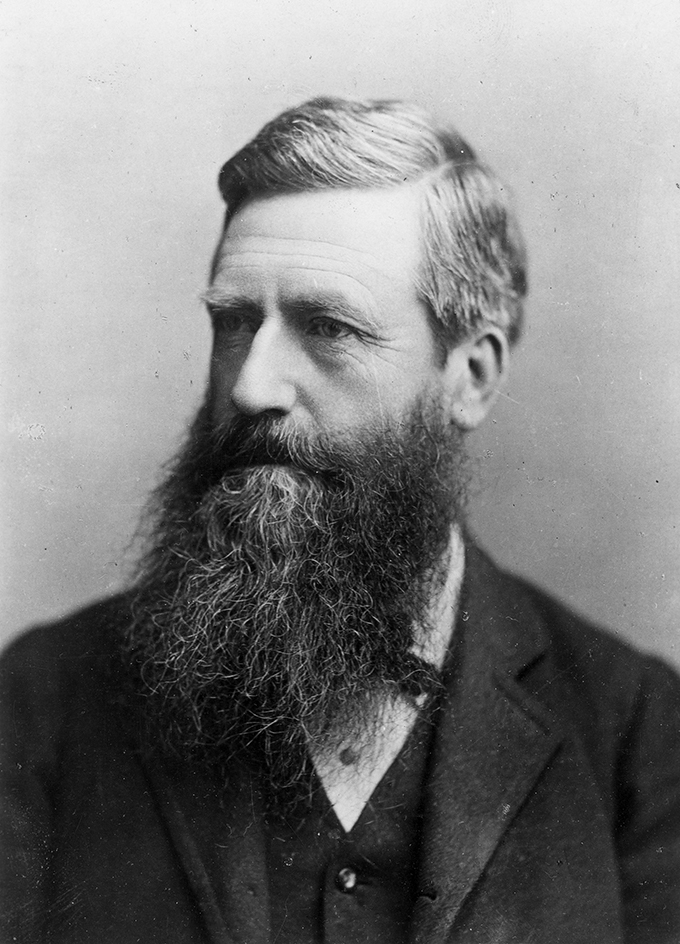Atkinson, Harry Albert (1831-1892), was a farmer and politician who served as premier, or prime minister, of New Zealand four times. He served in 1876 and 1877, in 1883 and 1884, briefly again in 1884, and from 1887 to 1891. In addition to serving as prime minister, Atkinson held high offices in six other ministries. During his time in office, New Zealand was a crown colony within the British Empire.
Early life and family.
Atkinson was born on Nov. 1, 1831, in Broxton, Cheshire (now Cheshire West and Chester), in England. He attended several schools briefly but was primarily educated at home. Atkinson and several members of his family moved to New Zealand in 1853. He settled near New Plymouth in the North Island and became a farmer. Atkinson considered himself a spokesman for New Zealand’s farmers throughout his political career.

Atkinson married twice, first to Amelia Jane Skinner (1831-1865), the daughter of an English banker, on March 25, 1856. The couple had four children: Harry Dunstan, known as Dunstan, was born in 1857; Edmund Tudor, known as Tudor, was born in 1858; Frances Elizabeth, known as Fanny, was born in 1861; and Alfred Charles was born in 1863. Amelia died in June 1865. On June 13, 1866, Atkinson married his cousin Anne Elizabeth Smith (1838-1919), called Annie. With Annie, Atkinson had four more children—Theodora, born in 1870, died in infancy; Samuel Arnold, known as Arnold, was born in 1874; Alice Lucy was born in 1876; and Harry Temple was born in about 1880.
Early political career.
Atkinson was a military leader in the New Zealand Wars, a conflict between British settlers and New Zealand’s native Māori << MOW ree or MAH ree >> people. Atkinson led colonial forces against Māori from the outbreak of the war in 1860 until 1864. In his later political career, Atkinson favored the rights of settlers over those of Māori.
Atkinson was first elected to the House of Representatives in New Zealand’s Parliament in 1861. At that time, members of Parliament did not belong to political parties. In 1864, he joined the government of Prime Minister Frederick Aloysius Weld as minister of defense. After the death of his first wife, Atkinson retired from Parliament in 1866 but was reelected the following year. He lived in England from 1868 to 1871. On his return to New Zealand, Atkinson again was elected to Parliament, representing Egmont from 1872 to 1891. Atkinson joined the government of Prime Minister Julius Vogel in 1874 as minister for crown lands and minister for immigration.
Prime minister.
Atkinson became prime minister of New Zealand for the first time in 1876, following Vogel’s resignation. In 1875 and 1876, Atkinson helped achieve the passage of legislation that abolished the provincial structure of the New Zealand government. The legislation went into effect soon after he became prime minister and reorganized the country into 63 counties. Throughout his political career, Atkinson supported numerous social programs, including a national insurance plan and women’s suffrage (right to vote).
The Atkinson government was defeated in 1877. He served as colonial treasurer under a series of premiers from 1875 to 1883. Atkinson became prime minister for the second time in 1883 and for the third time in 1884. He regained the office again in 1887. He continued to serve as colonial treasurer during his premierships.
During the late 1800’s, New Zealand suffered a period of economic depression. From 1887 to 1890, Atkinson established measures that helped return the colony to a sound financial status. In 1888, Queen Victoria of the United Kingdom made Atkinson a Knight Commander of the Order of St. Michael and St. George.
Many of Atkinson’s supporters were defeated in the election of December 1890. Atkinson was able to continue as prime minister until January 1891, when John Ballance replaced him. Poor health soon forced him to resign from the House of Representatives, but he served as speaker of the Legislative Council until his death on June 28, 1892.
